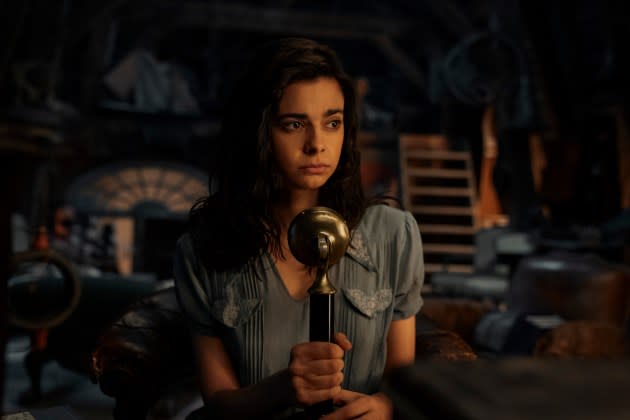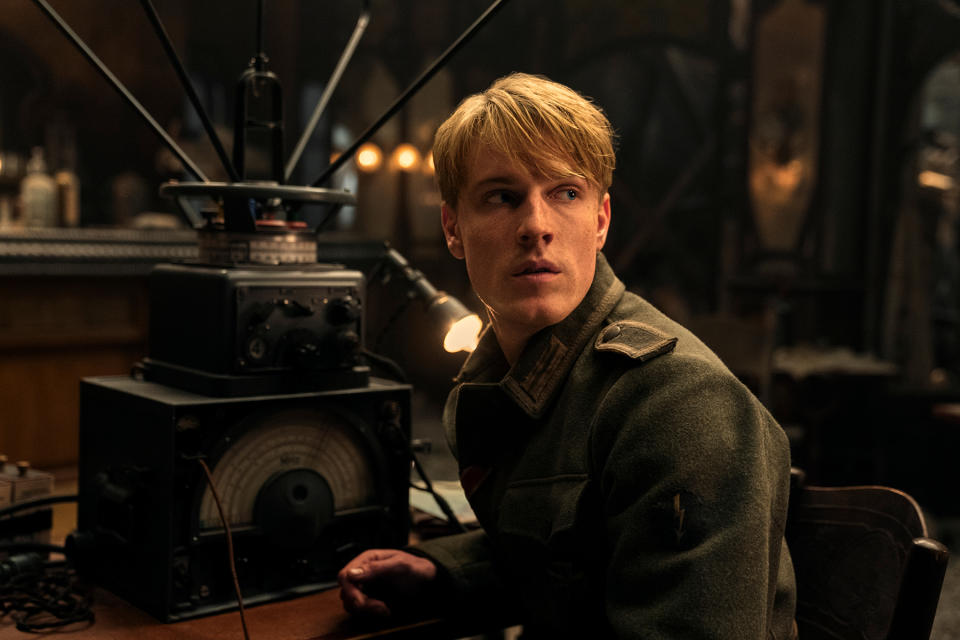‘All the Light We Cannot See’ Turns World War II Into a Schmaltz-Fest
- Oops!Something went wrong.Please try again later.
- Oops!Something went wrong.Please try again later.
- Oops!Something went wrong.Please try again later.
- Oops!Something went wrong.Please try again later.

Before there were dramas on television, there were dramas on the radio. With no visuals to present to their audience, radio series had to conjure up entire worlds out of carefully scripted narration, homespun special effects, and the sheer vibrance of their actors’ voices. Done right, whether back then or in modern podcast fiction, the effect can be magical, with the soundscape creating an experience that can be just as immersive as, if not more than, a story you watch on a screen. Heck, in 1938, Orson Welles nearly caused a national panic with his radio broadcast of War of the Worlds, convincing listeners that aliens really had invaded Grovers Mill, New Jersey — a stunt that would have been impossible if he’d tried it on television a couple of decades later.
The intimacy of audio storytelling, and the way it invites your imaginations to fill in the gaps, is something that’s generally been difficult for filmed entertainment to capture. There are great films and shows that use the radio business as a setting, like the original Frasier. And occasionally, you’ll get a movie, like Good Morning, Vietnam, that conveys just how important the right voice on the radio can feel to the people who need to hear it. More often than not, though, trying to visually dramatize what’s special about radio can be as tricky as trying to start a campfire in the bottom of a river.
More from Rolling Stone
'Nyad' Signals That We've Officially Entered Oscar Bait Season
'Bridgerton' Actor Calls Out Netflix For Not Supporting Her Through Psychotic Breaks
Striking Actors Say They Won't Cave to Studios' Holiday Threat
Netflix’s new miniseries All the Light We Cannot See is adapted from Anthony Doerr’s bestselling novel of the same name, and involves two characters whose lives circa World War II have largely been shaped by the power of the radio. One is Marie-Laure LeBlanc (Aria Mia Loberti), a blind French teenager who provides hope to her fellow citizens in the Nazi-occupied city of Saint-Malo by reading works of classic literature over shortwave radio each night. The other is Werner Pfennig (Louis Hofmann), an orphan whose technical genius with radio equipment has made him a valuable member of the German military, even though he’s a gentle soul who abhors Nazi dogma. Both, we come to find, were entranced as children by “The Professor,” a mysterious, gentle voice on the radio who offered lessons in philosophy and science to his young audience. And as the Allies begin bombing Saint-Malo, the radio feels like the only thing that can keep either of them safe, even as Marie-Laure is being hunted by a vicious Nazi jewelry expert Reinhold von Rumpel (Lars Eidinger) who believes she’s in possession of a cursed but invaluable gem.
I haven’t read the book, and thus can’t speak to how well it does or doesn’t bring the concept of radio itself to life. But the Netflix version, written by Peaky Blinders creator Steven Knight and directed by Shawn Levy (Night at the Museum, Stranger Things) never quite manages it. Marie, Werner, and other characters like Marie’s Uncle Etienne (Hugh Laurie) talk about how much radio matters to them, and to others like them. But it always seems like a plot device at best. And without that unifying element at its strongest, what’s left is a fairly thin, cliche-ridden story that plays as if someone turned the volume knob way up to try to compensate for how poorly the signal is coming in.
The story begins in August of 1944. Allied planes are bombing Saint-Malo, but the Nazis have locked the city gates, preventing the citizens from escaping. Each night, Marie does her broadcast, hoping it will both inspire her neighbors and encourage her long-absent father Daniel (Mark Ruffalo) to return. Werner, meanwhile, goes to extreme measures to keep his superiors from discovering the existence of Marie’s work, since she’s committing a serious crime under Nazi law. He seems to like her, despite only hearing her voice. More importantly, though, he loves the radio itself, and can sense a connection from the Professor to her. When an officer figures out what he’s been doing, Werner insists, “I did it to protect a memory. A place of hope.”
That line, like so much of All the Light We Cannot See, wears the miniseries’ heart on its sleeve, but in an ungraceful fashion. Much of the dialogue is laden with metaphors, but ones whose meaning is so unmistakable that you’d almost rather people speak in a less flowery, more straightforward manner. In time, we learn that radio can also be used to transmit secret codes, but this is a show that makes sure to spell everything out, several times over, as if it has less trust in its audience than Marie has in hers. (And just in case the dialogue hasn’t told you exactly how to think and feel, James Newton Howard’s soaring musical score will finish the job.)

This is the first screen role for the legally blind Aria Mia Loberti, and she’s by far the best thing in a project with several much more experienced and acclaimed actors. Her physicality works wonders to convey how Marie navigates a world she can experience through only four senses. And there’s a sincerity and openness in her performance that allows her to deliver various lines without seeming corny.
Her co-stars don’t fare as well, unfortunately. The usually terrific Ruffalo doesn’t seem to have figured out a character for Daniel beyond the sing-song, vaguely European manner in which he delivers his lines in flashback(*). Hofmann seems way too old and jaded to sell the notion that Werner is some powerless kid forced to work alongside monsters. And Lars Eidinger chews the scenery so vigorously, it’s as if his mouth is responsible for the city’s wreckage, as opposed to American ordnance. Von Rumpel’s over-the-top persona feels tired next to the more casual, chilling evil of most of the other Nazi characters.
(*) Laurie just plays things British, while the German characters all speak with German accents. It is, in other words, a World War II drama.
The show also deploys a fractured timeline, bouncing between events in 1944 and the childhoods of both Marie and Werner. I’m told the book uses a similar intercut structure, but the TV version of it keeps getting in its own way. Each time we jump back, it makes the present-day action feel sparse when it should be tense. And then present-day scenes can undermine drama in the past. We see, for instance, that Etienne is moving around the city in 1944, which then sucks all the emotion out of a flashback where he finds the courage to leave his house after spending years as a traumatized agoraphobe.
The house where Marie lives contains a gorgeous wooden scale model of the city, which Daniel built for Marie when they first moved there so she could learn how to get around on her own. The model lets Marie understand what Saint-Malo looks like, in the same way that stories told on the radio are meant to conjure up mental images of what we can only hear. But even though All the Light We Cannot See has the ability to show its viewers everything, it never provides enough compelling drama to go with all the pretty pictures.
All four episodes of All the Light We Cannot See are streaming now on Netflix. I’ve seen the whole thing.
Best of Rolling Stone

